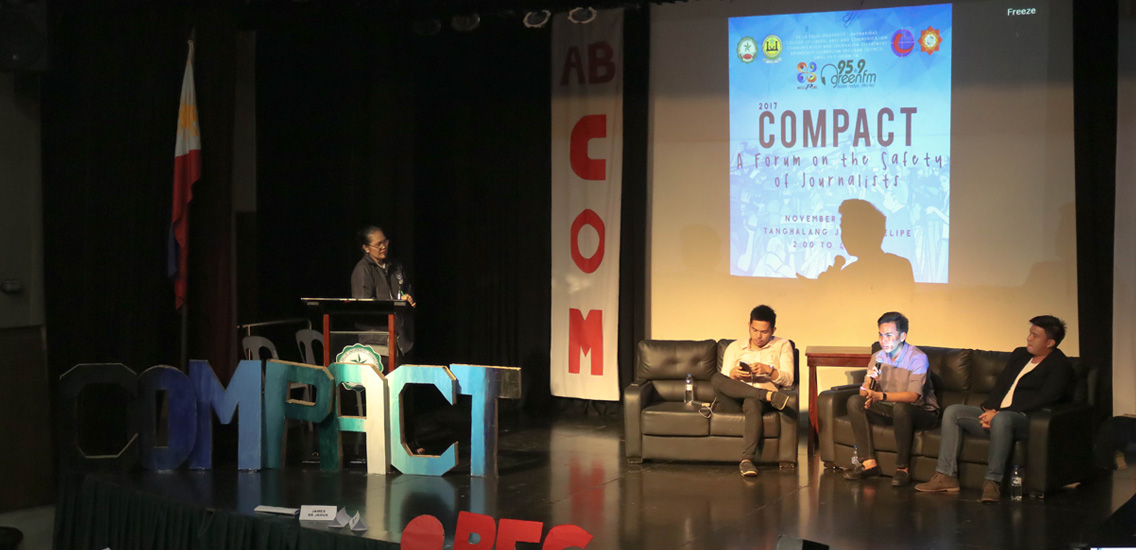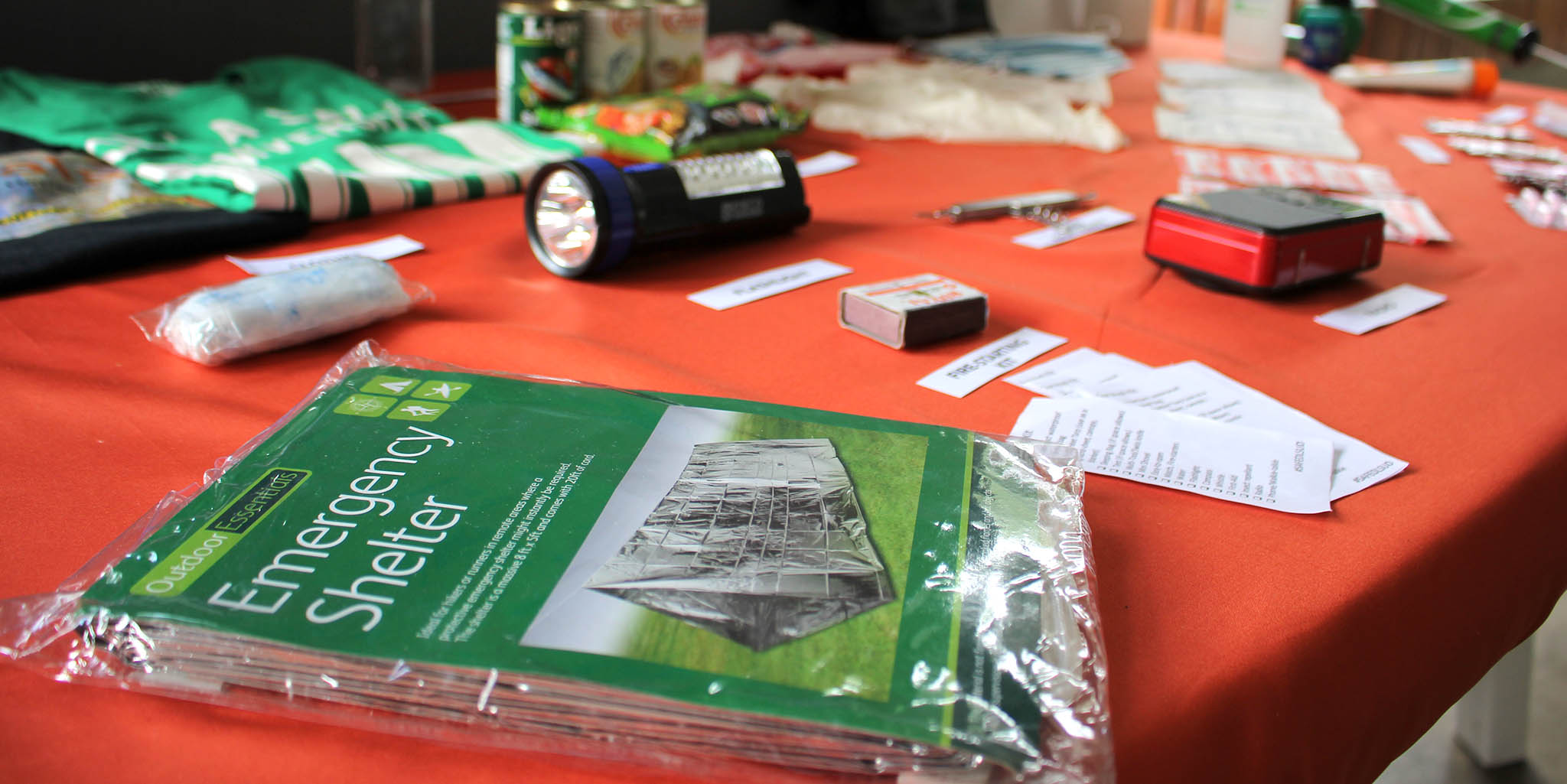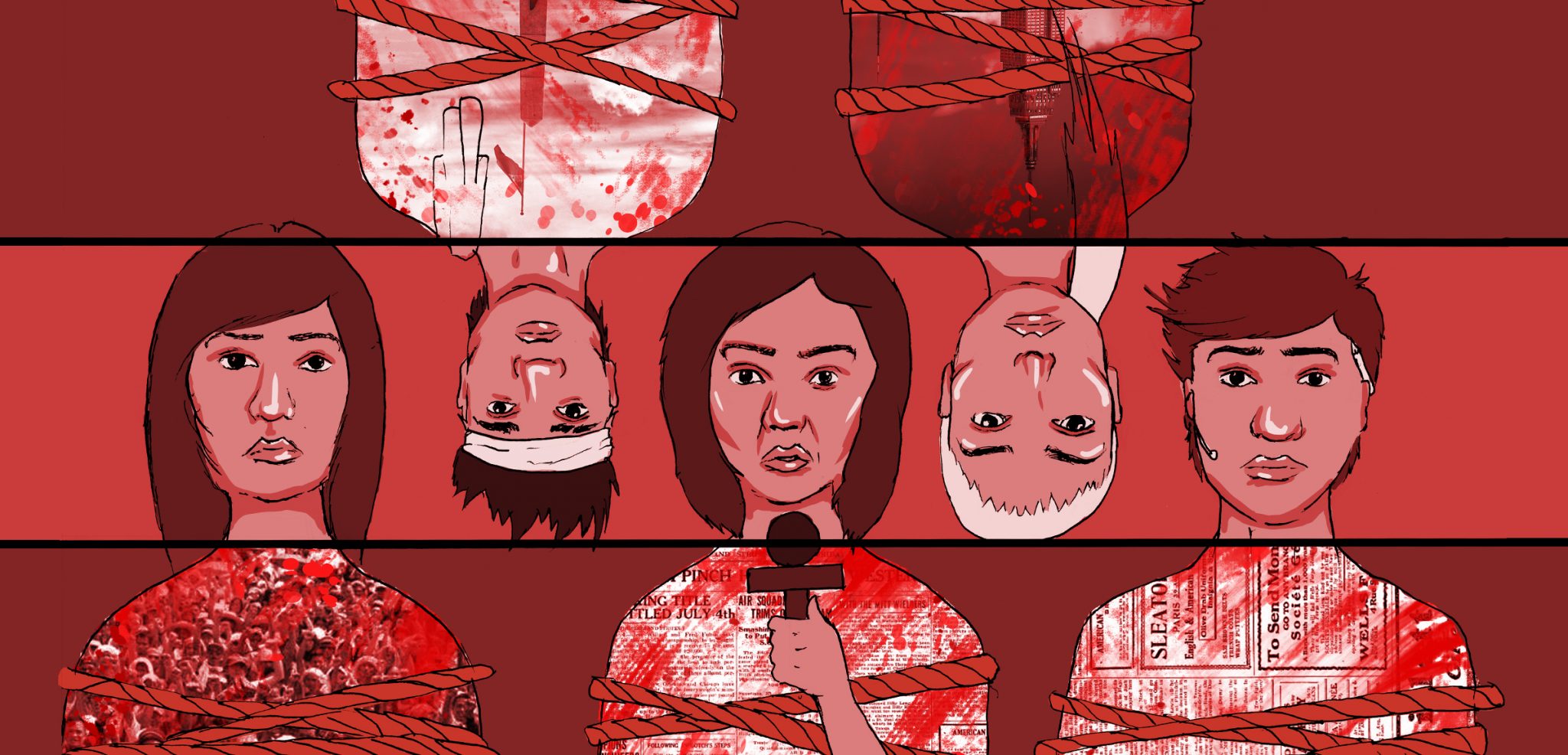‘No story is worth dying for’ – TV5’s Jefferson Caparas
Advocating journalism safety and fight against impunity, the Communication and Journalism Department (CJD) conducted a forum on journalism safety, where notable journalists and CJD alumni Jefferson Caparas, Allan Francisco, and James Patrick De Jesus shared their experiences on reportage, on November 23 at the Tanghalang Julian Felipe.

On the ground insights
“No story is worth dying for. Hindi tayo [journalists] ang storya,” said Caparas, AB Communication graduate of Batch 2007 and News Correspondent on TV 5, also quoting AB Communication graduate of Batch 1998, current part-time faculty at CJD, and ABS-CBN TV Patrol’s Ron Gagalac.
Adding to the importance of journalists staying alive, Caparas also tackled the mental health of journalists after being prompted by a student’s question to discuss post-partum stress after witnessing situations like the Marawi crisis first hand.
“Magu-undergo ka ng stress debriefing like ako pagkagaling ko ng Maguindanao, may nagpunta sa aking psychiatrist,” Caparas shared.
Meanwhile, De Jesus, a Lyceum of the Philippines – Manila alumnus currently at PTV 4, also emphasized the crucial importance of safety for media coverages, which can be ensured if novice journalists listen to veteran media practitioners. Hitting his point home, De Jesus explained that no journalist equals no story, indicating the need for journalists to stay alive to perform their role in informing society.
In some of his last words to the aspiring journalists in the audience, De Jesus said that understanding and preparing for possible danger is crucial to attaining the dream of a career in the media.

Shifting the focus of the seminar to journalism ethics, Francisco, an AB Broadcast Journalism graduate from Batch 2012 and current Marawi Correspondent at PTV 4, shared his belief to students that a journalist must be “human in terms of empathizing and helping people in tragic events.”
In terms of how to handle war reporting, Francisco advises listening to authorities for a journalist’s own safety, saying “Kung halimbawang sinabi sa akin ng authorities na bawal i-cover yan, hindi talaga naming ginagawa.”
In the open forum portion of the seminar, Caparas, De Jesus, and Francisco addressed the problem of sexual harassment experienced by female journalists in the industry. When these situations strike, Caparas and Francisco advise aspiring female journalists to remain professional in conducting interviews and research. They also added that a journalist in general “must refer” to high ranking officials as resource persons.
Meanwhile, De Jesus said that journalists must not be afraid to report any kinds of harassment as silence will only engender future coercion and will do nothing in preventing such an event from occurring again.
Given the current state of the country, the Marketing Communications Office (MCO) Director Rosanni Sarile said to student journalists that, “No story [is] worth dying for. You must know the extent and parameters of your work as a journalist and the value of legal, moral and ethical aspects.”
In an effort to empower student journalists to become advocates of truth, Sarile furthered that student journalists should be objective in telling the story and providing information and straight facts to the Filipino people.

Eight years later
In remembrance of the 8th year anniversary of the Maguindanao Massacre, a prayer vigil and lighting of candles were conducted together with advocacy statements for the death of the 32 journalists in 2009.
“All justices will happen in the right time. We should not stop commemorating them in our own way,” the MCO Director said.
According to the statistics issued by the Center for Media Freedom and Responsibility (CMFR), a total of 156 journalists and media workers have been killed in the Philippines from 1986 up to present time.
Moreover, the 2017 impunity index of the New York-based Committee to Protect Journalist (CPJ) ranked Philippines as the 5th country with the highest ratio of unsolved media killings.
Only 89 cases have reached the judicial court to which only 17 have resulted in conviction, according to the Center for Media Freedom and Responibility. The rest of the cases remain unresolved up to this day.





